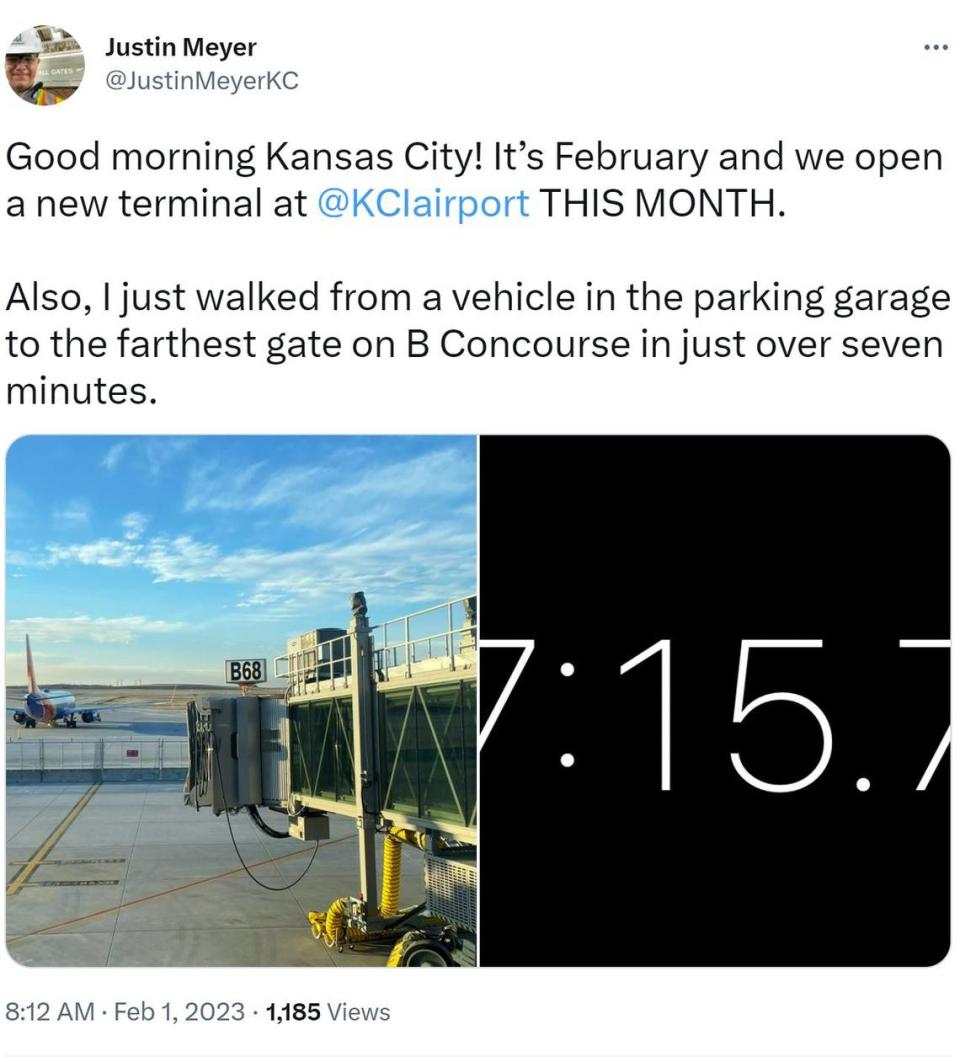Will the new KCI terminal take longer? Here’s how long it could take, garage to gate
How long will it take to get from garage to gate in the new Kansas City International Airport terminal?
It’s a common concern people raise when comparing the convenience of KCI’s existing terminals to the new one opening at the end of this month. So much so, one of the first comments on Mayor Quinton Lucas’ Facebook post revealing the Feb. 28 opening date of the terminal dealt with that point.
“A moment of silence for those of us who will no longer be able to roll up to the airport five minutes before boarding time,” the person wrote.
But it might not take as long as people fear to walk from their cars to their planes, according to a social media post Wednesday morning.
“I just walked from a vehicle in the parking garage to the farthest gate on B Concourse in just over seven minutes,” said by Justin Meyer, deputy director of aviation for the Kansas City Aviation Department, on Twitter.

During that time, Meyer covered a distance of about 2,000 feet to get to Gate B68, which will be one used by Southwest Airlines, he said in an interview.
“I started a stopwatch as soon as I stepped out of my vehicle and kept it going as I walked past where my meeting was just a little bit further to the farthest gate,” said Meyer, who didn’t use the moving walkways in the 630-foot connector between the two concourses.
He wanted to walk it to give future travelers a sense of how long it would take just to walk through the terminal.
Not everyone will be taking the longest route. From the closest gates to the parking garage, it took Meyer less than two minutes to get to his car. That was a distance of about 575 feet.
For travelers needing wheelchairs, that service will be provide through the airlines. Travelers will let airlines know they will need mobility services when they book their flight, he said.
The city has an online map of the terminal at www.flykc.com so people can check in advance to see how the terminal is laid out.
Meyer said he didn’t have to go through the security checkpoint, but it’s been his experience in Kansas City — especially with the TSA PreCheck — the wait time has been negligible.
“The car to gate experience is still going to be extremely reasonable for travelers,” Meyer said. He points out that Kansas City is not Denver, Atlanta or Chicago.
The security checkpoint will have 16 lanes on opening day with the ability to add two more in the future. That compares to the 14 lanes in the existing terminals.
The airport expects the checkpoint to be staffed to meet travel demands, meaning that during peak travel times during the morning, the checkpoint will be fully staffed. Later in the day when there’s a lull in travel, the security team is able to fluctuate their staffing, he said.
The checkpoint will include dedicated space for TSA PreCheck passengers, an improvement over the existing terminals where at some gates the PreCheck passengers are intermingled with regular passengers. The airport also has a partnership with Clear for its trusted traveler program, which also helps travelers get through security faster.
The airport will continue to recommend that travelers arrive two hours before their flight. That recommendation, however, is for travelers who require help like checking bags and checking in for their flights.
Travelers who are not checking bags, may already be checked in or may be traveling during less busy times may find they don’t need to arrive two hours beforehand, Meyer said.
“If someone found themselves to be with ample time with a number less than that, I don’t expect that the new terminal will drive the need for that to change or that the need for that to increase,” he said.
“If it does increase, I think it might be some passengers just choosing on their own will to arrive earlier to have an enjoyable terminal experience and to explore the new facility.”

